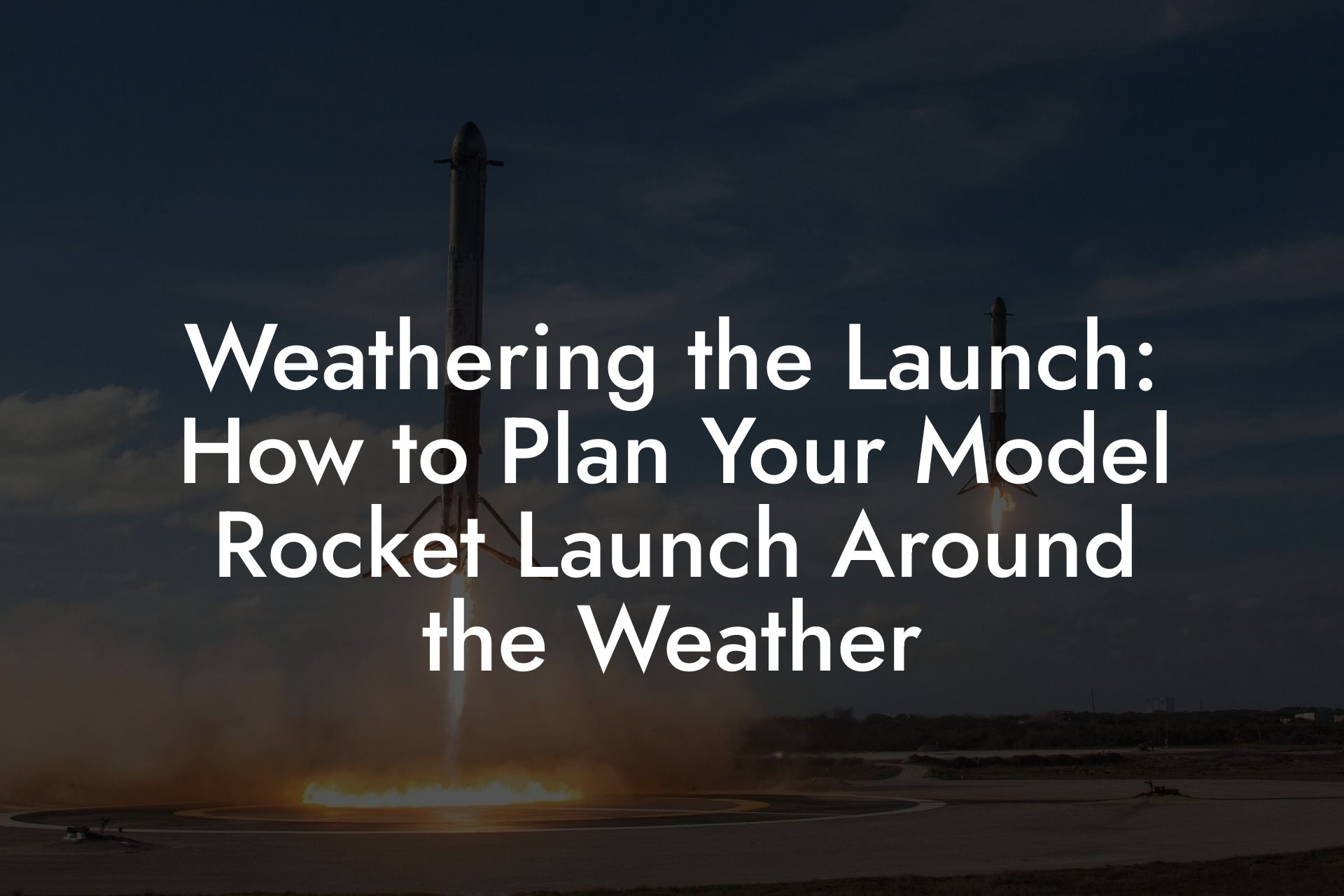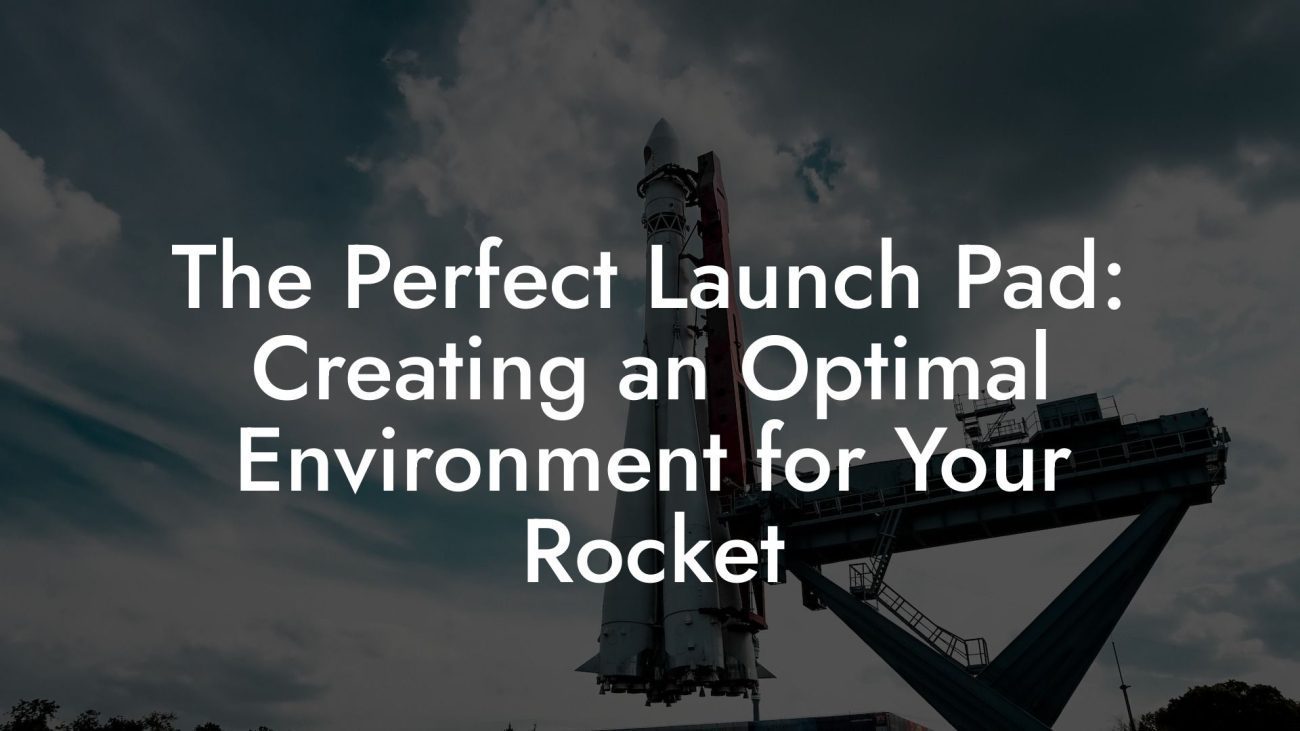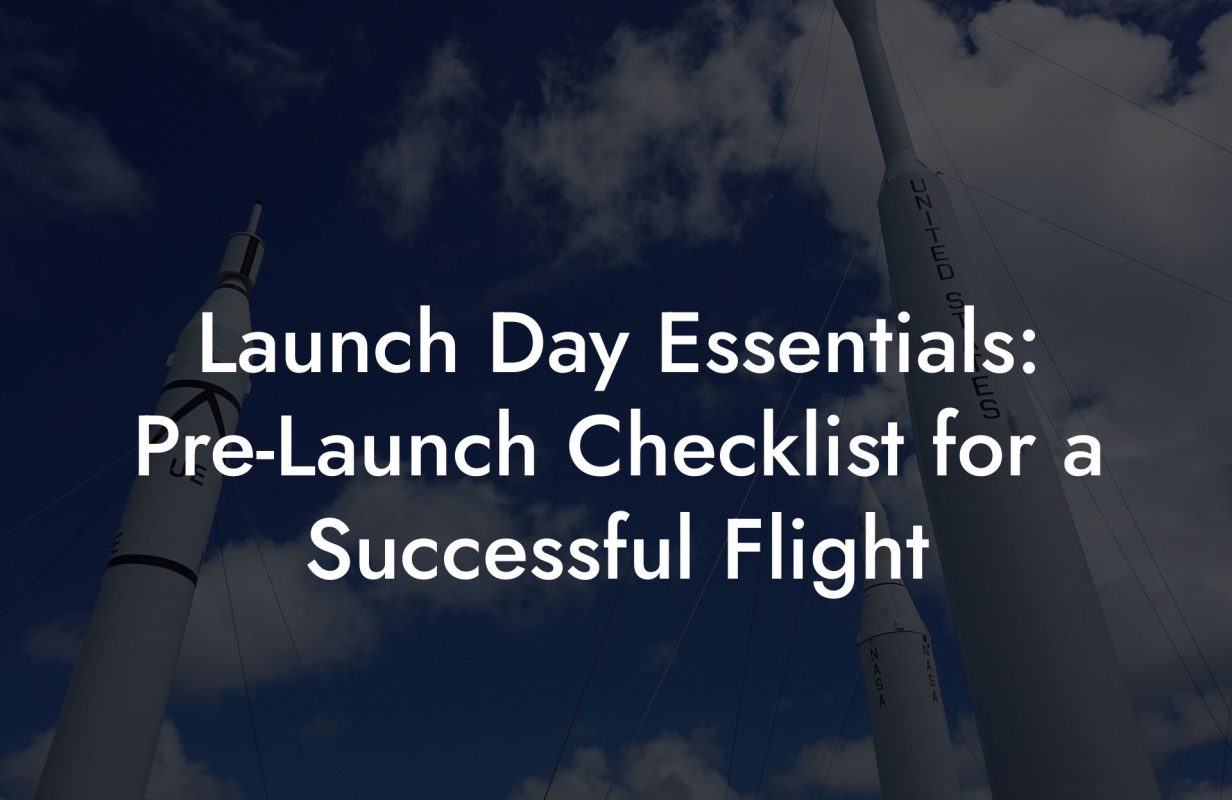Weather can make or break a model rocket launch. "Weathering the Launch: How to Plan Your Model Rocket Launch Around the Weather" is your essential guide to understanding and harnessing atmospheric conditions to ensure a safe, successful, and thrilling flight. Whether you’re an aspiring rocketeer or a seasoned enthusiast, this guide will show you how to monitor, interpret, and plan for the weather, so you can launch with confidence, even when the forecast is less than perfect.
Quick Links to Useful Sections
- Understanding the Impact of Weather on Rocket Launches
- Essential Tools for Weather Monitoring
- Weather Apps and Online Forecasts
- Portable Weather Stations
- Wind Meters and Anemometers
- Pre-Launch Planning: Adapting to Weather Conditions
- Developing a Weather Contingency Plan
- Scheduling Your Launch
- Adjusting Your Rocket Setup for Weather Variability
- Safety Considerations: Launching in Challenging Weather
- When to Delay the Launch
- Emergency Procedures and Communication
- Case Studies: Successful Launches Despite Weather Challenges
- Case Study 1: The Wind Warrior
- Case Study 2: Rain or Shine
- Case Study 3: Temperature Triumph
- Model Rocket Weathering FAQs
- Your Next Launch: Plan, Adapt, and Soar with Confidence
Understanding the Impact of Weather on Rocket Launches
Weather plays a crucial role in model rocketry, affecting everything from engine performance to recovery and overall flight stability. Even minor changes in wind speed, temperature, or humidity can influence the behavior of your rocket during launch and recovery.
Key Weather Factors:
- Wind Speed and Direction: Wind can alter your rocket’s trajectory, affect its stability, and influence the deployment of recovery systems.
- Temperature: Extreme temperatures can affect fuel performance and material integrity, potentially altering burn rates or weakening structural components.
- Humidity: High humidity may impact the adhesive properties of certain materials and affect the aerodynamics of your rocket’s finish.
- Precipitation: Rain or snow can interfere with both the engine’s performance and the recovery system, as well as create unsafe conditions on the launch site.
- Atmospheric Pressure: Changes in air pressure can subtly affect combustion and the efficiency of the rocket’s propulsion system.
By understanding these weather components, you’ll be better equipped to plan your launch and mitigate potential issues that may arise from unpredictable conditions.
Essential Tools for Weather Monitoring
Accurate weather information is the backbone of a successful launch. Equipping yourself with the right tools can make all the difference when it comes to anticipating and adapting to atmospheric changes.
Looking For The Best Model Rocket Kits? You'll Love These:
Weather Apps and Online Forecasts
In today’s digital age, a wide range of weather apps and websites provide up-to-the-minute forecasts. Look for apps that offer detailed information on wind speed, direction, temperature, and precipitation. Popular options include:
- The Weather Channel: Offers detailed forecasts and radar images.
- AccuWeather: Provides real-time updates and extended forecasts.
- MeteoEarth: Uses interactive maps to visualize weather patterns.
Portable Weather Stations
For the dedicated rocketeer, a portable weather station can provide on-site, hyper-local data. These devices measure wind speed, humidity, temperature, and barometric pressure, ensuring you have the precise information you need at the launch site.
Wind Meters and Anemometers
Handheld wind meters are invaluable for quickly gauging wind conditions before a launch. They offer immediate feedback on wind speed and direction, allowing you to make real-time decisions about whether it’s safe to proceed.
Combining these tools with traditional online forecasts gives you a comprehensive view of the weather, ensuring that no detail is overlooked.
Pre-Launch Planning: Adapting to Weather Conditions
A well-thought-out pre-launch plan accounts for every possible weather scenario. The key is to be flexible and ready to adapt your launch strategy based on real-time conditions.
Developing a Weather Contingency Plan
Prepare for various weather outcomes by developing contingency plans:
- Optimal Conditions: Identify the ideal weather conditions for your launch, such as low wind speeds, moderate temperatures, and clear skies.
- Marginal Conditions: Determine acceptable limits for less-than-ideal conditions. For example, decide on a maximum wind speed beyond which you will postpone the launch.
- Emergency Plan: Establish protocols for rapidly rescheduling the launch if weather conditions deteriorate unexpectedly.
Scheduling Your Launch
Timing is everything. Use your weather tools to determine the best window for launch. Factor in not only the current conditions but also short-term forecasts that predict changes in weather over the next few hours.
Flexibility is key, sometimes a minor delay can be the difference between a mediocre flight and a record-breaking launch.
Adjusting Your Rocket Setup for Weather Variability
Your rocket’s configuration may need to change based on the weather. Here are some tips for adapting your setup:
- Engine and Fuel Considerations: Temperature can affect fuel burn rates. In colder weather, fuel may burn slower, so consider slight adjustments to your engine’s thrust expectations.
- Aerodynamic Adjustments: For launches with higher wind speeds, consider using additional stabilizing fins or reinforcing existing ones to counteract unpredictable airflow.
- Recovery System Preparation: In humid or rainy conditions, ensure that your recovery system is packed securely and that any parachutes or streamers are free of moisture before launch.
- Launch Pad Setup: Ensure that your launch pad is on stable, level ground. In wet conditions, you might need to reinforce your setup to prevent slippage or shifting.
Making these adjustments can help mitigate the effects of adverse weather, ensuring a more consistent and controlled flight.
Safety Considerations: Launching in Challenging Weather
Launching your model rocket in less-than-ideal weather conditions requires extra caution and safety measures. Always prioritize the safety of your team and any bystanders.
When to Delay the Launch
Recognize the signs that indicate it’s best to postpone your launch:
- High Wind Conditions: Winds above your predetermined safety threshold can compromise flight stability and recovery.
- Precipitation: Rain, snow, or heavy mist can affect engine performance and the reliability of your recovery system.
- Extreme Temperatures: Both very high and very low temperatures can alter fuel behavior and material integrity.
Emergency Procedures and Communication
In cases where weather conditions suddenly change, have a clear emergency plan in place. Communicate with your team using pre-established signals and ensure that everyone knows the procedure for a rapid, safe shutdown or delay of the launch.
Maintaining a calm and coordinated approach during unexpected weather changes is critical for safety.
Case Studies: Successful Launches Despite Weather Challenges
Learning from real-world examples can provide valuable insights into weather-adaptive launch strategies. Here are a few case studies from the rocketry community:
Case Study 1: The Wind Warrior
A rocketeer in a moderately windy area refined their launch strategy by adjusting fin configurations and delaying the countdown until wind speeds dropped to acceptable levels. This careful planning resulted in a stable launch and a smooth recovery, even with unpredictable gusts.
Case Study 2: Rain or Shine
Another enthusiast successfully launched during a light drizzle by using waterproofing measures for the recovery system and ensuring the rocket was well-insulated against moisture. The rocket maintained stable flight and was retrieved intact, proving that minor precipitation isn’t always a deal-breaker.
Case Study 3: Temperature Triumph
In a high-altitude, cold-weather launch, a team adjusted the fuel mixture to compensate for lower ambient temperatures. Their proactive measures ensured that the engine’s burn rate remained optimal, leading to a record-setting altitude despite the chilly conditions.
These case studies underscore the importance of flexibility, preparation, and continuous learning in overcoming weather-related challenges.
Model Rocket Weathering FAQs
Here are some frequently asked questions to help you navigate the challenges of launching your model rocket in variable weather conditions.
1. How does wind affect the flight of a model rocket?
Wind can alter the rocket's trajectory, reduce stability, and affect the performance of the recovery system. It’s essential to monitor wind speed and direction before launch.
2. What is the ideal weather for a model rocket launch?
Ideal conditions typically include low wind speeds, clear skies, moderate temperatures, and low humidity. However, minor deviations can often be managed with proper planning.
3. How can I adjust my rocket for a windy day?
You may consider reinforcing the fins, adjusting the center of gravity, or delaying the launch until wind conditions improve. A stable launch pad setup is also crucial.
4. Can I launch in light rain?
Light rain can sometimes be acceptable if precautions are taken, such as waterproofing the recovery system and ensuring the rocket’s components are not compromised by moisture.
5. What temperature ranges are safe for launching?
Launches should ideally occur in moderate temperatures. Extreme cold or heat can affect fuel performance and material integrity, so it’s best to avoid launching in such conditions.
6. How can I monitor weather conditions at my launch site?
Use a combination of weather apps, portable weather stations, and wind meters to gather comprehensive, real-time data.
7. What should I do if the weather suddenly changes during my launch?
Follow your emergency procedures immediately, which may include aborting the launch or delaying ignition until conditions stabilize.
8. Are there any tools that can predict microclimate changes at a launch site?
Some advanced portable weather stations and specialized apps can provide microclimate data, offering more precise forecasts for your specific launch location.
9. How important is it to have a backup plan for launch day?
A backup plan is critical. Always be prepared to reschedule your launch if weather conditions become unfavorable.
10. How do I document weather conditions for future launches?
Keep a detailed log of weather data, including wind speed, temperature, humidity, and precipitation, alongside your launch results to help refine your planning over time.
Your Next Launch: Plan, Adapt, and Soar with Confidence
A successful model rocket launch is built on meticulous planning and the ability to adapt to the ever-changing weather. By understanding atmospheric conditions, leveraging the right tools, and preparing detailed contingency plans, you can ensure that your launch day runs smoothly, no matter what the forecast says.
With every launch, use your experiences and documented data to refine your strategies and elevate your performance. Embrace the challenge of weathering the launch, knowing that each flight brings you one step closer to mastering the art of rocketry.
The sky is full of possibilities, plan wisely, adapt to the conditions, and launch with confidence knowing that you have all the essentials to succeed.
Looking For The Best Model Rocket Kits? You'll Love These:
Useful Interruption: Dive deeper into the world of Model Rockets with our most popular sections. If there is anything you think is missing or anything you would love for us to write about, just give us a shout.
- Getting Started & Basics With Model Rockets
- Model Rocket Design, Build & Customization
- Model Rocket Propulsion & Engine Technology
- Model Rocket Launch Techniques & Recovery
- Model Rocket Advanced Rocketry & Innovations
- Model Rocket DIY and Customization
- Model Rocket Equipment Reviews & Digital Tools
- Community, Competitions & Education
- Model Rocket Troubleshooting & FAQs
- Model Rocket Bonus/Seasonal & Niche Topics
A group of model rocket enthusiasts gathered at a field for their weekly launch event. Among them was Dave, a seasoned builder known for pushing the limits of hobby rocketry. This time, he had outdone himself.
“Ladies and gentlemen,” Dave announced, dramatically pulling a cloth off his latest creation, “I present to you: The Kraken!”
The crowd gasped. This wasn’t just a model rocket, it was a monster. The thing stood 8 feet tall, had six clustered engines, and was covered in enough duct tape to qualify as a classified aerospace project.
“Dave,” muttered Steve, the cautious safety officer, “Have you, uh… done the math on this?”
“Math?” Dave scoffed. “I built it in my garage at 3 a.m. with parts from eBay. This is an art piece, Steve.”
The countdown began.
5…
4…
3…
2…
1…
The engines ignited with a BOOM, and The Kraken shot up… kind of. It immediately did a violent barrel roll, narrowly missing the spectators before skyrocketing at an angle that could only be described as “legally questionable.”
The crowd collectively ducked as The Kraken flew straight over the adjacent cornfield, where Old Man Jenkins, the grumpiest farmer in town, was minding his business.
KABOOM!
The rocket disappeared behind the barn. A moment later, a flaming piece of Estes igniter wire landed at Steve’s feet. The silence was deafening.
And then, an unmistakable sound echoed across the field.
Jenkins’ shotgun being cocked.
“DAVE!!!” Steve shouted. “RUN.”
And that was the day Dave invented the first-ever biologically powered rocket booster: pure adrenaline.
To this day, nobody knows where The Kraken landed, but legend has it, it still haunts the skies, terrifying unsuspecting drones and low-flying birds.










